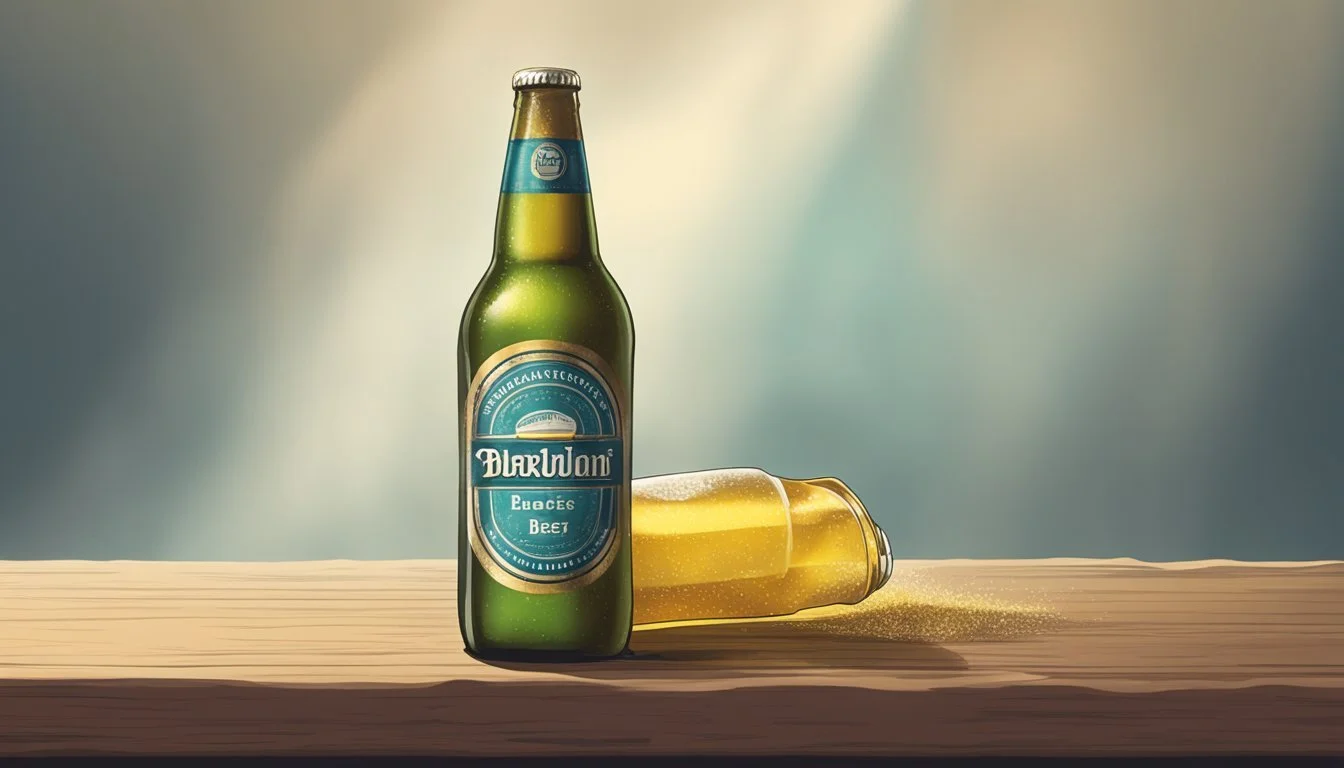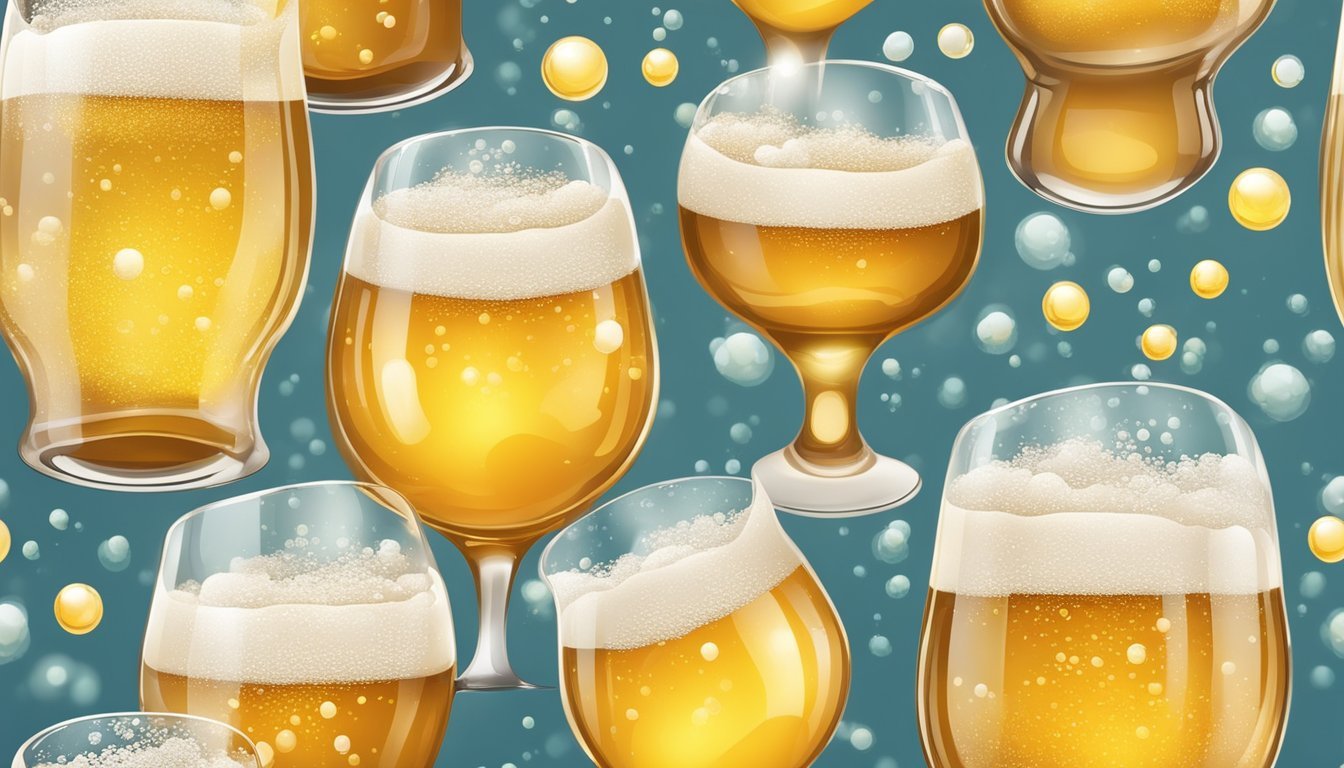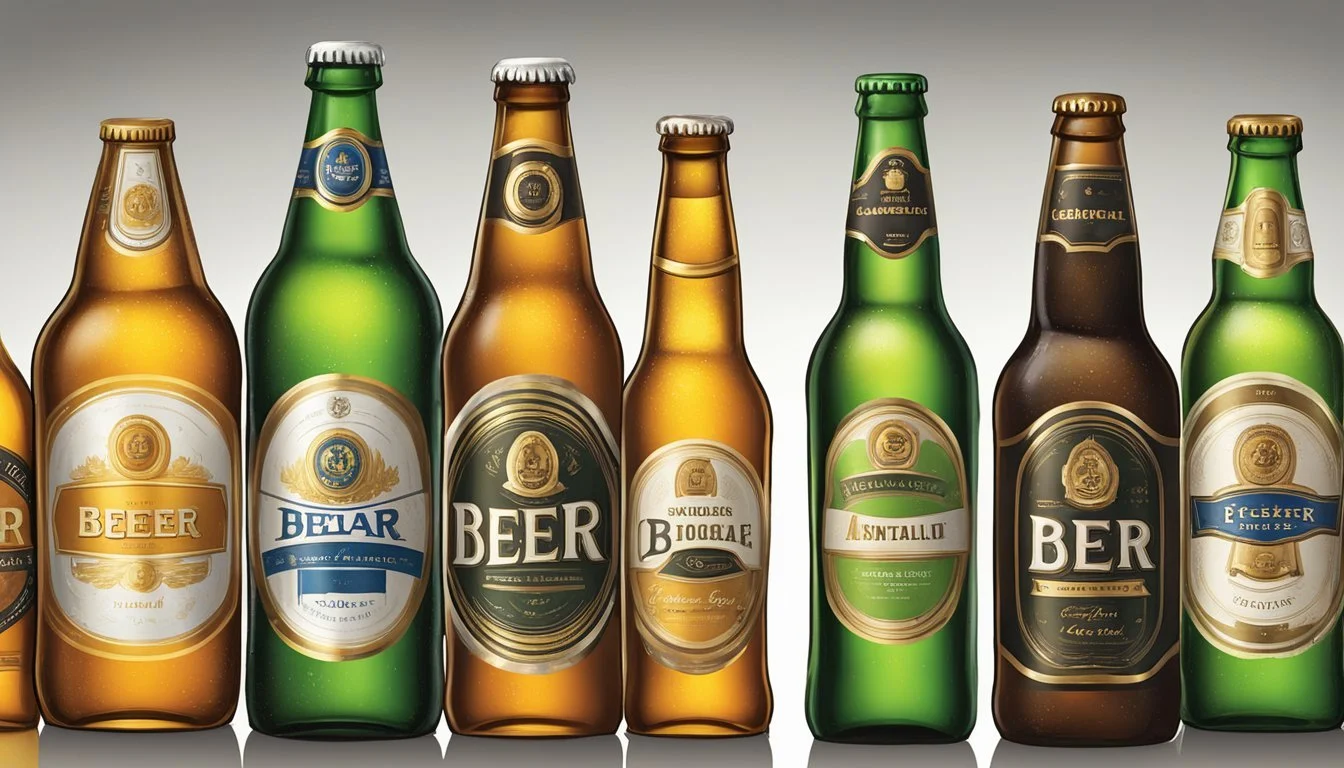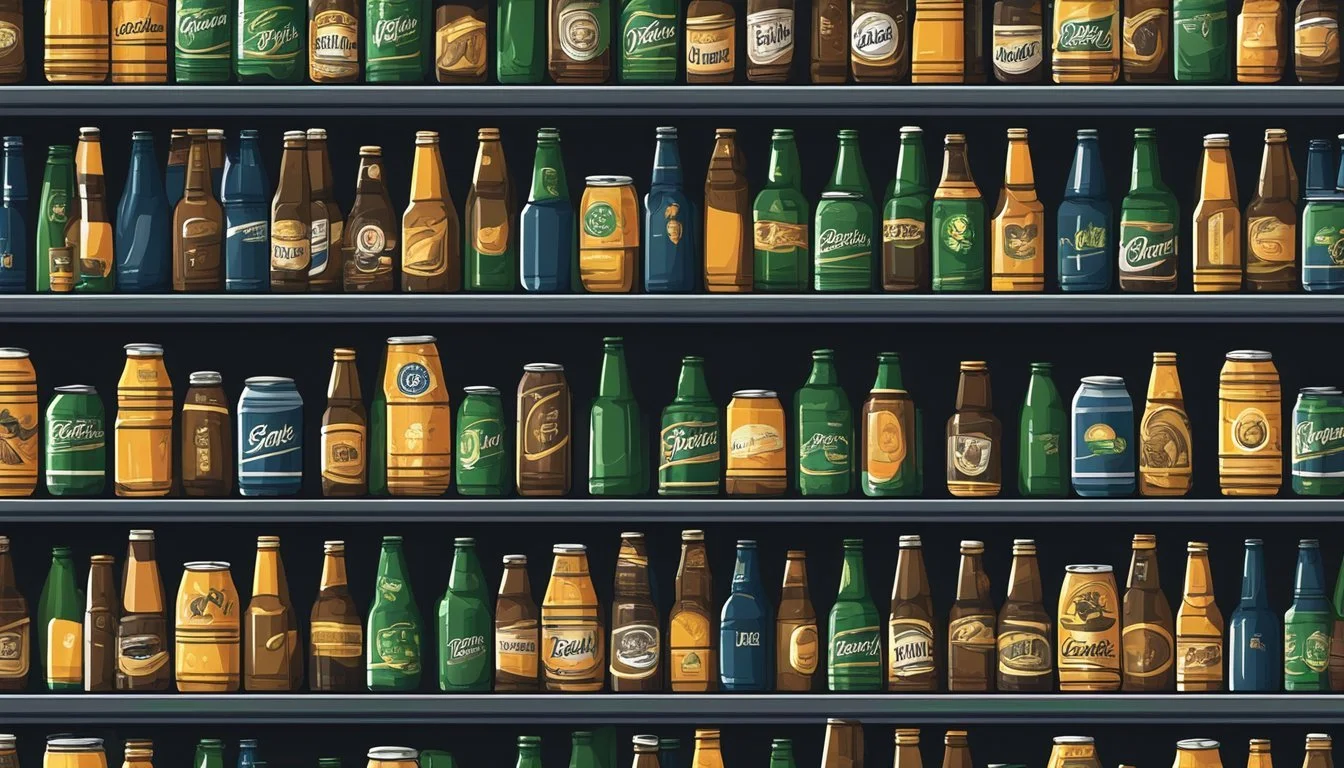Does Beer Go Bad?
Understanding the Shelf Life of Your Brews
Beer, a staple of social events and relaxation rituals alike, is known for its enduring shelf life in comparison to many perishable goods. However, there is a common question that arises among consumers and connoisseurs: does beer expire? The truth is that beer does have a shelf life, and while it may not spoil in the traditional sense like dairy or meat, its quality can deteriorate over time. The factors that influence the longevity and freshness of beer include its alcohol content, hop composition, and storage conditions.
The degradation of beer quality is often a gradual process, not characterized by the presence of harmful pathogens that cause illness, but by changes in taste, aroma, and mouthfeel. When stored properly, beer's alcohol and hop content act as natural preservatives, but when exposed to heat, light, or oxygen, these same components can react to produce off-flavors, most notably a 'skunked' taste resulting from light-struck reactions in the hops. In general, while beer may not become dangerous to drink past its best-by date, it can become unpalatable and fail to provide the sensory experience intended by the brewer.
To enjoy beer at its peak, understanding storage is essential. Keeping beer at a consistent, cool temperature, away from light, and sealed to prevent oxidation can vastly extend its palatable lifespan beyond what many might expect. Whether one is a casual drinker or a dedicated aficionado, awareness of these factors plays a crucial role in ensuring that each sip of beer is as satisfying as intended.
Understanding Beer Shelf Life
To ensure the best taste and quality, beer lovers should be aware of a beer’s shelf life and the factors affecting it, such as expiration date, storage conditions, and temperature changes.
Expiration Date
Beer comes with an expiry date or best-by date printed on the packaging. This indicates the period during which the brewer believes the beer will be at its optimal flavor. It does not mean the beer will be harmful to consume after this date, but rather that the quality of taste may begin to decline.
Proper Storage Conditions
Proper storage is paramount to maintaining beer's quality. Beer should be stored upright in a fridge to reduce oxidation and contamination risks. Darker places are preferred as light can cause beer to develop an unpleasant taste. Always keep the beer sealed until ready to consume to avoid any flavor loss.
Impact of Temperature Changes
Temperature fluctuations can be detrimental to beer's stability. Beer should be kept in refrigeration at a consistent temperature - typically around 45-55°F (7-13°C) for ales and 38-48°F (3-9°C) for lagers. A deviation from these temperatures, especially warming to room temperature, can accelerate aging and affect taste, making the beer seem "expired" more quickly.
By paying attention to these elements of beer's shelf life, one can best enjoy their beer as intended by the brewers.
Factors Affecting Beer Quality
Maintaining the quality of beer is crucial and can be influenced by several environmental factors. Awareness of these can extend the life and taste of beer, ensuring consumers enjoy its best form.
Significance of Light Exposure
Light exposure, particularly to ultraviolet (UV) light, significantly affects beer quality. It triggers a reaction that can lead to a lightstruck or skunky flavor, which is the result of chemical changes in the beer. Beers are often stored in dark-colored or opaque bottles to mitigate this issue and preserve their intended taste.
Importance of Temperature
Temperature plays a pivotal role in beer's quality. Fluctuations and excessive heat can cause deterioration, leading to stale or off-flavors. Optimal storage temperatures for beer are generally below 40° F (4° C) to maintain freshness and prevent heat exposure from compromising the quality.
Oxygen and Beer Spoilage
The presence of oxygen post-bottling is another enemy of beer, leading to oxidation. Oxidation not only affects the flavor, creating a cardboard-like or stale taste but also impacts the head of the beer. Minimizing oxygen ingress during and after the bottling process is essential to prolong the beer's shelf life and maintain its quality.
Chemical Reactions in Beer
In the lifecycle of beer, various chemical reactions play crucial roles, influencing everything from flavor to shelf life. Two significant players in these reactions are oxygen and microbes, each instigating changes that can drastically alter the beer's character.
Role of Oxygen
Oxygen exposure catalyzes oxidation in beer, a chemical reaction that can significantly impact beer's taste and freshness. When beer is exposed to oxygen:
Oxygen molecules react with organic compounds, leading to the creation of new flavor compounds.
Oxidation can produce undesirable flavors, often described as stale or cardboard-like.
Minimizing oxygen contact during bottling and storage is essential to prolong the beer's palatable life.
Impact of Bacteria and Microbes
Bacteria and microbes can spur a variety of chemical reactions in beer, ones that can either enhance or detract from its quality, such as:
Certain microbes, like lactic acid bacteria, can contribute to a sour taste through the production of organic acids.
Spoilage bacteria may produce off-flavors and aromas, rendering the beer unpleasant.
While some styles of beer embrace the influence of specific bacteria for flavor development, in most cases, they are indicative of contamination.
By controlling these factors, breweries strive to prevent unwanted chemical reactions and ensure the stability and enjoyment of their beer.
Packaging's Effect on Durability
The materials and design of beer packaging have significant roles in preserving the quality and extending the shelf life of beer. These vary from aluminum cans and glass bottles to kegs and growlers, influencing durability during storage and transportation.
Bottles versus Cans
Glass Bottles come in various colors—brown, green, and clear. Brown glass bottles offer the best protection against UV light, which can deteriorate beer quality. By blocking harmful rays, they prolong the beer's freshness. Green glass provides less protection, and clear glass offers minimal defense against light, making their contents more prone to spoilage.
Aluminum Cans create a complete barrier from light and oxygen, two factors that can lead to the degradation of beer. They are also lighter and less fragile than glass, reducing the risk of damage during transport. It's the reason why canned beer is gaining popularity for its durability and convenience.
Protection from Light
UV Light:
High exposure can cause a skunky flavor, known formally as "lightstruck."
Brown glass bottles reduce this risk, while clear and green bottles offer less protection.
Packaging Materials:
Cans: Impenetrable to light, preserving beer quality over time.
Bottles: Variable protection—colored glass is preferable.
Kegs and Growlers: Typically made of materials that shield from light, like stainless steel for kegs, but depend on users' handling for growlers.
When considering the effect of packaging on the durability of beer, both material and color are crucial factors. They ensure the contents are kept away from light and oxygen, which are essential for maintaining flavor and extending shelf life.
Degradation of Beer Flavors
As beer ages, its flavors and aroma can deteriorate, resulting in a less enjoyable drinking experience. This degradation varies among different types of beer and can depend on several factors.
How Aroma and Taste Change
The deterioration of beer flavor often begins with changes in aroma—a key component of taste. While fresh beer might have a pleasant hoppy aroma and taste, beer that has degraded may develop unpleasant smells and flavors. One common issue is a skunky flavor, which occurs when beer is exposed to light, causing a reaction in the hops that produces a characteristic scent akin to a skunk's spray. Beers can also become stale, with an aroma and taste that have been likened to wet paper or cardboard due to oxidation, a process that affects the beer's original hop character and can significantly reduce the intended flavor profile.
Flavor/Aroma Fresh Beer Degraded Beer Hoppy Vibrant, aromatic Diminished, sometimes unpleasant Skunky Non-existent Prominent when exposed to light Stale Absent Noticeable
Different Beer, Different Shelf Life
Beer styles impact shelf life significantly. For instance, IPAs and other hop-forward beers are best enjoyed fresh to maximize their distinctive hop character and intended bitterness. As they age, the bitter compounds can break down, altering the balance and resulting in less desirable flavors. In contrast, stouts and certain strong ales may improve with age, as their complex flavors can become more rounded. However, care must be taken because they can still develop unpleasant tastes if stored improperly. It's essential to consider the beer style and the brewer's recommendations when determining optimal consumption time.
Beer Style Suggested Consumption Timeframe IPAs Enjoy fresh Stouts Can improve with age Hop-forward beers Drink promptly
Different beers have different shelf lives and ideal storage conditions. They can develop off-flavors as they age, particularly if they are exposed to unfavorable conditions such as light and heat.
Beer Longevity by Style
Different beer styles have varying shelf lives, influenced largely by their alcohol by volume (ABV) and sensitivity to light. These factors determine how well the beers will age and maintain their quality over time.
High ABV Beers
High ABV beers, such as barleywines and imperial stouts, boast a longer shelf life due to their higher alcohol content, which acts as a preservative. Typically, these styles can last upwards of two years with the right storage conditions. They often even evolve in flavor over time, developing more complexity and depth.
Barleywines: Can last 2+ years.
Imperial Stouts: Expected to last at least 1-2 years.
Other high ABV styles like lambics, known for their unique brewing process, can also age well, often extending their shelf life similarly to that of fine wines.
Light-sensitive Styles
Certain beer styles are particularly sensitive to light, which can accelerate their spoilage and lead to a phenomenon known as "skunking."
Hoppy beers, which include many craft beer varieties, are especially prone to this, and their shelf life can be considerably reduced if exposed to light. They are best enjoyed within a few months of packaging.
Lagers and pilsners often fall into the light-sensitive category and should be consumed relatively fresh to maintain their crispness and avoid off-flavors.
Wheat beers are also light-sensitive, and their nuanced flavors are best preserved by storing them in a dark and cool environment.
To ensure the longest shelf life and best flavor, these beers should be stored away from direct light, ideally in a dark and cool place.
Safely Consuming Expired Beer
Expired beer often leads to a compromise in quality rather than safety. Consumers may note a difference in taste, but the harm is generally minimal. This section explores the balance between quality and safety and advises on situations when one should avoid drinking expired beer.
Understanding Harm Versus Quality
Stale Taste: Beer does not become harmful after the expiration date, but its quality may decline. A stale or flat taste can develop over time, which beer enthusiasts describe as "skunky." Such off-flavors result from changes in beer's chemical composition over time, not the presence of pathogens.
Quality Markers:
Color: Beer may darken.
Odor: An unusual smell can signal aging.
Foam: Reduced or absent foam might indicate a loss of freshness.
When to Avoid Drinking
Storage Conditions: Beer stored improperly, such as in direct sunlight or at fluctuating temperatures, is more likely to have a degraded quality. Such environment speeds up the breakdown of key compounds in beer, leading to a faster decline in taste and aroma.
Visible Contaminants: Although rare, if a beer is visibly contaminated, or the container is damaged, it should be considered undrinkable to avoid potential harm. Beer that is cloudy or has particles floating in it could indicate the presence of unwanted contaminants introduced after the brewing process.
Beer past its expiration date is generally safe to consume, if not always pleasant tasting. Always consider the appearance and smell before consumption to ensure an enjoyable experience.
Preservation and Aging Processes
Understanding that beer's longevity is governed by both its inherent preservatives and the inevitable progression of decay is vital for both brewers and consumers.
Natural Preservatives in Beer
The very ingredients that give beer its unique flavors also act as natural preservatives. Hops, an essential component in most beers, contain acids that exhibit antimicrobial properties, which inhibit the growth of spoilage organisms. Additionally, alcohol and low pH serve as preservation agents themselves, creating an environment less hospitable to bacteria that could cause spoilage. During the brewing process, yeasts play a crucial role; they consume sugars to produce alcohol, and in doing so, they also generate compounds that can help to stabilize the beer.
Antimicrobial agents: Hops extract
Stabilization: Alcohol byproduct from yeast fermentation
pH: Typically low in beer
Incremental Decay Over Time
Despite these natural preservatives, beer experiences incremental decay over time. The aging process is not necessarily deleterious in all styles; some beers are crafted to mature and develop complexities. However, most commercial beers are intended for consumption within a short timeframe after bottling. Exposure to heat and UV light can accelerate deterioration, manifesting as off-flavors such as those caused by diacetyl, a buttery off-flavor that most brewers strive to minimize. Improper handling and storage, even with unopened bottles, can hasten the decline in quality, emphasizing the importance of controlled environments for preservation.
Exposure risks: Heat and UV light
Common off-flavor: Diacetyl
Storage recommendation: Controlled temperature and minimized light exposure
The Role of Beer Containers and Lighting
Beer containers and lighting play pivotal roles in maintaining the quality of beer, whether opened or unopened. They influence light exposure, which can affect the flavors, leading to a phenomenon known as lightstrike, particularly detrimental to aged beer that beer lovers hope to preserve.
Container Material Types
Beer is packaged in various containers such as glass bottles, aluminum cans, and kegs. The material and color of these containers affect beer's exposure to light:
Glass Bottles: Comes in clear, green, and brown colors. Brown bottles offer the most protection against UV rays. Green and clear bottles offer less shielding, making the beer more susceptible to quality degradation.
Aluminum Cans: Provide excellent protection from light, as they block out all light ensuring no lightstrike occurs.
Kegs: Typically made of stainless steel, they shield the beer completely from light, making them an optimal choice for preserving the beer's original flavors.
Effects of UV Rays and Artificial Light
Light exposure is one of the primary causes beer to go bad. Here's how different types of light sources affect beer:
UV Rays: Can penetrate glass bottles and cause a chemical reaction that alters the taste of the beer, leading to skunky or off flavors.
Fluorescent Lights: Common in retail settings, can lead to lightstrike as they emit a small amount of UV light.
LED Lights: Much safer for beer storage as they usually do not emit UV light, reducing the risk of spoilage.
Storing beer in a beer fridge or a dark, cool place can help to mitigate the effects of harmful light exposure. Whether it's bottled beer or in cans, protecting beer from light preserves its integrity and ensures enjoyment upon serving.
Practical Tips for Beer Storage
Storing beer properly is crucial to maintaining its quality and shelf life. Beer lovers should consider several key factors to ensure their brews remain fresh and flavorful.
Temperature Control: Beer should be stored in a cool environment, ideally between 38 and 55 degrees Fahrenheit. Refrigeration is recommended to slow the aging process, but avoid freezing, as it can cause the beer to become slushy and potentially rupture the container.
Avoid Light Exposure: Sunlight and fluorescent light can lead to 'skunking,' a chemical reaction that spoils the flavor of beer. Therefore, one should store beer in a dark place or opt for cans or dark-colored bottles to minimize light exposure.
Positioning: Bottled beer is best kept upright to minimize the contact area between the beer and the cap. This reduces the risk of oxidation and contamination from the cap.
Humidity Control: A moderate level of humidity is favorable, especially for corked beers, to prevent the cork from drying out.
Container Type Consideration Bottled Beer Keep upright, away from light Canned Beer Less vulnerable to light, but still keep in a cool place
Shelf Life Consideration: Generally, beer can last for about six months in proper storage conditions before it starts to lose its optimal taste. However, some high-alcohol content or barrel-aged beers may even improve with time.
Prompt action: Regular checks are recommended to ensure that the beer's storage conditions remain consistent and optimal.
By adhering to these storage guidelines, one can significantly prolong the enjoyment of their beer collection.








